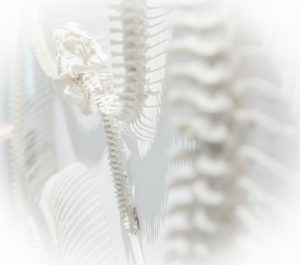Menopause, and Perimenopause 101
Having spent the past decade involved in maternal health education, I have seen how much misinformation there is out there regarding this stage of women’s health, a passage about which people actually CARE and invest. I began to wonder how much misinformation is out there regarding the next stage of our lives, which people DO NOT actually care about, unless you are the woman herself. There aren’t “menopause showers” or endless businesses set up to celebrate and sell this passage, or whole sections of bookstores and websites dedicated to it. What is almost worse than the misinformation, is the LACK of information, from healthcare providers to the general public when it comes to menopause. So I invited Dr. Anna Paola Cavalieri, one of our wonderful gynecologists who spent her residency in the “menopause riparto” at Policlinico Umberto I here in Rome, to use fact based information to enlighten a group of women as to what the heck this whole thing is about. The article below is a summary of her presentation.
Humans are the only mammals that survive through menopause. When we think that much of our health knowledge comes from studying other animals, we don’t have any animals to study on this topic.
In Western countries the average age of menopause is 51. “Premature menopause” is considered before  40, at age 45 it is called “early” and after 53, it is considered “late”.There is also medically induced menopause which happens when both of a woman’s ovaries are removed. Menopause does not occur when the uterus or just one ovary is removed. There is no test to predict the age of menopause. As with many things, there is no “one size fits all”. There are many individual differences in how and when women experience “the Change”. The biggest influence on how women experience it, is genetics. Other elements have an effect as well, such as women with higher BMI tend to enter menopause later than those with lower BMIs because fat tissue produces estrogen. The number of pregnancies a woman has also has an influence, usually the more pregnancies, the more delayed the onset of menopause. Smokers and former smokers tend to experience menopause 2 years earlier than the non smoking population. Some long term use of certain medicines can bring on earlier menopause such as corticosteroids and thyroid hormones. Interestingly, forms of birth control and age of menarche do not have a correlation as to when a woman begins menopause.
40, at age 45 it is called “early” and after 53, it is considered “late”.There is also medically induced menopause which happens when both of a woman’s ovaries are removed. Menopause does not occur when the uterus or just one ovary is removed. There is no test to predict the age of menopause. As with many things, there is no “one size fits all”. There are many individual differences in how and when women experience “the Change”. The biggest influence on how women experience it, is genetics. Other elements have an effect as well, such as women with higher BMI tend to enter menopause later than those with lower BMIs because fat tissue produces estrogen. The number of pregnancies a woman has also has an influence, usually the more pregnancies, the more delayed the onset of menopause. Smokers and former smokers tend to experience menopause 2 years earlier than the non smoking population. Some long term use of certain medicines can bring on earlier menopause such as corticosteroids and thyroid hormones. Interestingly, forms of birth control and age of menarche do not have a correlation as to when a woman begins menopause.
So what is Menopause and Perimenopause?
The physical changes that occur during perimenopause and menopause are due to the different balances of estrogen and androgens in our bodies. We experience a fast decline of estrogen and a slower decline of androgens, throwing off the balance we are accustomed to. Menopause is a gradual process, perimenopause can start from 6-10 years before a woman is in menopause which is clinically considered to be after she has passed through one year without a period, and can last for up to 5 years after her last period. It is a phase marked by many hormonal fluctuations. Countless women do not understand that what they are experiencing are hormonal symptoms; low libido, moodiness, fat distribution, hot flashes, sweats to name a few. The symptomology of menopause is highly individual. Some women experience more physical than emotional symptoms, others vice versa, unfortunately it seems to be the luck of the draw.
During perimenopause, menstruation patterns can vary, periods can arrive very close together and then become farther and farther apart. Women who have experienced heavy PMS symptoms or Post Partum Depression can have more severe cognitive and emotional symptoms during menopause. Those who experience heavy menopause symptoms can be at greater risk for cardiological and metabolic diseases.
Menopause symptoms can be broken down to short term, medium term and long term.
Short Term Symptoms
The short term symptoms which begin in perimenopause, can last from a few months to a couple of years and begin even years before the onset of actual menopause (that one year without menstruation). Short term symptoms can include a change in body fat distribution, insomnia due to evening hot flashes, mood changes, loss of libido and memory loss. Hot flashes, the most “famous” symptom, can last from three to five years and vary in length and intensity, they often occur at night and can lead to poor sleeping patterns. The thermoregulation happens in a part of our brain that is very close to the area that regulated our ovaries and the production of hormones. The flashes are caused by the loss of estrogen in our bodies.
Medium Term
Medium term symptoms such as vaginal dryness, painful intrcourse, urinary tract infections and incontinence can start in perimenopause and go on for years. There are two kinds of incontinence which affect women at this stage, the first is neurological incontinence which can be treated with medication. The second is stress incontinence, when there is a poor closure of the bladder. This is related to the pelvic floor due to a lack of estrogen, in this case exercise is the best medicine, yoga, pilates, pelvic floor exercises and sexual intercourse are all good options.
Long Term
The long term health complications can include osteoporosis, diabetes,cardiovascular and neurological diseases such as Alzhiemers which are caused by the hormonal imbalance we experience.
Many women experience weight gain due to hormonal changes. With age, muscle mass diminishes, the less muscle mass we have the less calories we need. Abdominal fat is not just an aesthetic issue, it can lead to an increased risk of diabetes, cardiovascular disease and cancer. The only way to manage weight gain is to eat less and move more. Approximately 150 minutes of moderate aerobic exercise per week or 75 minutes of aerobic activity and eating 200 calories less per day should help stabilize weight gain. Also staying fit means maintaining muscle tone which helps prevent risks of fracture as bones weaken.
Unfortunately many of the emotional symptoms coincide with other life challenges such as raising teenagers, relationship stress, work stress and aging parents which can make it hard to understand what is attributable to menopause. How much is hormones and how much is “life”?
Hormone Replacement Therapy
The physical changes that occur during perimenopause and menopause are due to the different balance of estrogen and androgens in our bodies. This imbalance can lead to dry skin, wrinkles, adult acne and facial hair growth and thinning head hair, similar to men. Obviously there is no “cure for menopause” but treatments address the symptoms, such as vaginal dryness, and the hot flashes one experiences. The symptoms tell which hormones one may need as a therapy. The hormones prescribed during perimenopause should be different than those prescribed during menopause since a woman in perimenopause can still get pregnant. Hormone replacement therapy is HIGHLY individual and there are many different solutions. There are now new guidelines regarding HRT which was once prescribed for everyone, but no longer as the hormones can exacerbate other pathologies if present. Current HRT recommendations in the Italian Guidelines is that HRT should be used to relieve symptoms. The guidelines recommend starting with low doses and testing the results and adjusting accordingly. HRT can help relieve symptoms of hot flashes, vaginal dryness, sleep disorders, low libido and itchy eyes. Studies are showing that low doses are as effective as high doses so very few people are prescribing high doses. The studies done on the risks of HRT have only been done on high dose therapies. A study in 2002 terrified everyone, doctors included, regarding the danger of using of HRT, and so many stopped prescribing HRT. Yet this study which showed high risks of possible, and sometimes fatal, side effects, was performed on women over 70 years old with existing heart disease. Hormone replacement therapy works to rebalance hormones, and long term imbalance should be regulated as it can make oncological cells grow faster.
symptoms tell which hormones one may need as a therapy. The hormones prescribed during perimenopause should be different than those prescribed during menopause since a woman in perimenopause can still get pregnant. Hormone replacement therapy is HIGHLY individual and there are many different solutions. There are now new guidelines regarding HRT which was once prescribed for everyone, but no longer as the hormones can exacerbate other pathologies if present. Current HRT recommendations in the Italian Guidelines is that HRT should be used to relieve symptoms. The guidelines recommend starting with low doses and testing the results and adjusting accordingly. HRT can help relieve symptoms of hot flashes, vaginal dryness, sleep disorders, low libido and itchy eyes. Studies are showing that low doses are as effective as high doses so very few people are prescribing high doses. The studies done on the risks of HRT have only been done on high dose therapies. A study in 2002 terrified everyone, doctors included, regarding the danger of using of HRT, and so many stopped prescribing HRT. Yet this study which showed high risks of possible, and sometimes fatal, side effects, was performed on women over 70 years old with existing heart disease. Hormone replacement therapy works to rebalance hormones, and long term imbalance should be regulated as it can make oncological cells grow faster.
Besides helping to control the symptoms listed above, the benefits of Hormone Replacement Therapy in a nutshell are: HRT can lower the risk of mortality from certain diseases like heart disease and cancers like breast, bowel, endometrial and lowers frequency of fractures and diabetes.
The known risks are: Increase risk of venal thrombosis episodes and stroke. The risk of thrombosis is low relative to other risks. After 10 years of therapy the risk of thrombosis increases. As with any form of treatment, the individual should consider the risks versus benefits and discuss their individual and family medical history with a doctor before coming to a decision.
A woman needs to be “studied” before being prescribed hormones, but when well delivered, hormones can be a menopausal woman’s best friend. Therapies can be so effective that if women do not want to stop, should they? We still do not have a full understanding of the risks posed. For highly symptomatic women the possible risks are worth it to them in order to retain a quality of life. Dosages can be changed. You can get tested at any point, you should do it highly symptomatic even if only after 3 months of no periods to understand if your estrogen level is too high. This “studying” is time consuming and unfortunately not many health care providers are able to dedicate the time necessary to have a thorough understanding of an individual’s imbalance and therefore can create a well balanced and effective treatment.
Vaginal dryness is a problem of every woman after menopause, and this can lead to yeast infections and other symptoms. Luckily it is simple to treat with local estrogen. The only women who cannot use it are women with estrogen dependent cancers at the time. Breast cancer survivors can use it.
Osteoporosis
One thing every woman should do BEFORE she enters menopause it to take a bone mineral density test. It is important to do this prior to menopause in order to have a baseline to test against further on so one  can understand if decreasing bone density is due to the onset of menopause. If you have not had a period for 3-4 months and have not had a bone mineral density test, do it ASAP. Decrease in bone density is very rapid in the first years after menopause. Our bone density reaches its peak at about 30 years old then decreases at a rate on average of 1-2% per year. In the 1st year of menopause that goes up to 7%. The two most common forms of osteoporosis are spinal and femoral, spinal is connected to hormone loss while femoral is more age related. Osteoporosis is asymptomatic and is not connected to joint pain. During the periods of time in a woman’s life where she does not have a menstruation for a long while (ie prolonged breastfeeding) taking a calcium supplement to protect against osteoporosis could be a good idea. One way to reduce risk of osteoporosis is to stay on top of your estrogen and calcium levels. Thin women and smokers have higher risks of osteoporosis. Bisphosphonates is a type of medicine that can be used to fight bone density loss.
can understand if decreasing bone density is due to the onset of menopause. If you have not had a period for 3-4 months and have not had a bone mineral density test, do it ASAP. Decrease in bone density is very rapid in the first years after menopause. Our bone density reaches its peak at about 30 years old then decreases at a rate on average of 1-2% per year. In the 1st year of menopause that goes up to 7%. The two most common forms of osteoporosis are spinal and femoral, spinal is connected to hormone loss while femoral is more age related. Osteoporosis is asymptomatic and is not connected to joint pain. During the periods of time in a woman’s life where she does not have a menstruation for a long while (ie prolonged breastfeeding) taking a calcium supplement to protect against osteoporosis could be a good idea. One way to reduce risk of osteoporosis is to stay on top of your estrogen and calcium levels. Thin women and smokers have higher risks of osteoporosis. Bisphosphonates is a type of medicine that can be used to fight bone density loss.
Other Non Hormonal Therapies to treat Symptoms
There are other therapies surrounding menopause that are not Hormone Replacement Therapies.
Non hormone treatments are:
Anti Depressants
Biphosphonates for bone density
Local vaginal moisturizer estrogen
Clonedina Medicine for hot flashes
Tibolona Molecule which was created in a lab, while not a hormone, works like one, and can be used to help with emotional and libido problems.
Exercise
Phytoestrogens are plant based hormones but their benefits are not yet scientifically proven.
Homeopathic treatments
Acupuncture
Something to keep in mind is that sometimes menopause symptoms can be a signal that there are other areas of our health that require attention. So take time to listen to your body and take care of yourself, no matter what stage of life you are in.
